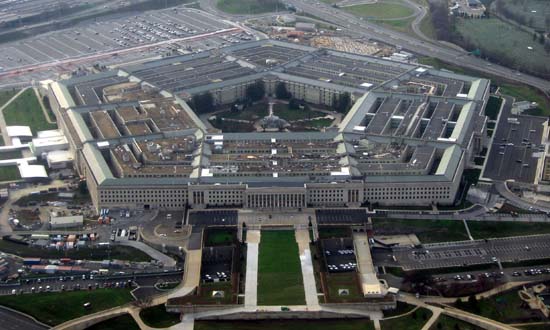The Defense Department is working to improve its ability to share information, not just between the services, but also with its industry partners and other government agencies, the Pentagon’s deputy chief information officer for information enterprise said Sept. 28.
The planned Joint Information Environment is a central piece of the information-sharing solution, Dave DeVries said.
“If you think about it, everything we do is about sharing information, whether it be information about a known threat out there or how the forces are arrayed and how they’re … performing.”
Information is meaningless unless it is delivered into the hands of those who need it. And because there are so many separate networks, information sharing isn’t as efficient as it could be, he said.
The Joint Information Environment will take all of those separate networks and collect them into a shared architecture, DeVries said, noting that he expects full capability to be realized between 2016 and 2020.
To understand the significance of the Joint Information Environment, it’s important to understand DOD’s mission, DeVries said.
“Ultimately, it is to fight and win the nation’s wars, but also to maintain the peace, [and] that involves sharing information,” he said. “In order to do that more efficiently and effectively, we’ve got to change how we procure and lash together our information technologies so we can enable better and more secure information sharing.”
DOD is working together with industry to procure and configure information technologies in a more secure fashion, DeVries said.
When it’s complete, he added, the Joint Information Environment will enable every user to get onto an approved device, anywhere they are — at home, at work or on the move — and get the information they need in a secure, reliable fashion.
Significant progress already has been made, he said, and the average user may have noticed some changes as the services work to simplify their networks.
The services will continue to support their own networks, under the aegis of the Defense Information Systems Agency, DeVries said. The Joint Information Environment will eliminate redundancies in those networks, however. For example, instead of operating a parallel Army-only network for Army units that are stationed at a predominantly Air Force joint base, the Air Force will operate a single shared network for all personnel assigned to the base.
Developing the Joint Information Environment also involves moving more toward enterprise –- that is, DOD-wide — services rather than every component buying, operating and maintaining their own services, he said.
“For example, rather than having every command operate their own email system, today the services have been combining those into a more efficient way of offering those things up at the service level,” DeVries said.
The enterprise email system, spearheaded by the Army, currently supports more than 550,000 users, he said. The Defense Department intends to develop that system further by eventually providing every DOD user with an email address that is theirs regardless of command or location.
Ultimately, DOD users will have access to their email anywhere in the world, on any network operated by a DOD agency, he said.
These efficiency efforts eventually will allow DOD to reduce the number of data centers over eight to 10 years, from 1,500 to about 250, he said. Data centers house computer systems, power supplies and other equipment and applications required for the operation of information technologies.
Core data centers, operated by the services and DISA to a known standard with a common rate structure, would replace the old data centers, DeVries said.
The department also will move toward cloud computing, he said, which offers great efficiencies not only in hardware and software, but also in data sharing.
“We have just published our cloud strategy,” DeVries said, “and the services are moving rapidly toward moving their applications and systems to the cloud.”
The Joint Information Environment will provide full-spectrum support to the department in the operation, procurement and maintenance of information technology systems, from the foxhole to the Pentagon, he said.
“It is not a new program of record. It is not a turn-key solution. It is a compilation of what the services and agencies have under way today to modernize and make more efficient their information technology in both systems and applications,” DeVries said.
